
Master Sgt. Justin Tyler has been an Air Force pararescueman for more than a decade. “Nobody can say that, hey, that’s the reason why the guys died. The reason they died is because the building blew up, right? So, yeah, it’s kind of about learning how to be at peace with that.” Photo by Nick Roush for Coffee or Die Magazine.
For more than a decade, Lt. Col. Paul Andrews’ job was to rain down destruction on battlefields. As a combat weapons officer on fearsome AC-130 gunships, Andrews would spot enemy positions with the plane’s sensors and cameras, train the cannons and Gatling guns onto far-off figures and — knowing full well he was about to end the lives of his targets — pull the trigger.
But the missions that haunt him are the ones where he wasn’t there to pull it.
“Our mantra is to always protect,” Andrews told Coffee or Die Magazine. “When I think of my personal experiences, the ones that stay with me are honestly the people I couldn’t protect. The times I couldn’t get there overhead, whether that was a time problem, a geographic problem, or just missing it.”

Photo by Nick Roush
In particular, Andrews says, he thinks back to an infamous gunfight to which his crew was assigned — but could not participate — in November 2010 in Afghanistan’s Pech River Valley.
What was supposed to have been US soldiers sweeping Taliban out of the hills in an operation called Bulldog Bite had turned into an ambush and near-overrun of Alpha Company of the 101st Airborne’s 327th Infantry Regiment. The Americans were attacked by a larger, dug-in Taliban force that relentlessly fired rocket-propelled grenades and heavy machine guns, cleaving soldiers apart. A civilian contractor named Karl Beilby was blown into a tree, where he hung helplessly until an Air Force pararescueman, or PJ, named Roger Spark arrived and pulled him down.
In elevated, relatively exposed terrain, it was a fight perfect for the precision firepower of an AC-130. But the whole fight took place during the day.
“At the time, we were restricted to period-of-darkness operations with other CAS platforms providing close air support during the daytime,” says Andrews.
The 101st soldiers and the PJs called in gun runs and Hellfire missiles from AH-64 attack helicopters, and, in a last-ditch effort to avoid being overrun, a 2,000-pound bomb from a circling F/A-18.
In the end, five Americans died in the firefight.

An AC-130 at Cannon Air Force Base. Photo by Nick Roush for Coffee or Die Magazine.
“The whole crew wished we would have gotten there because just the sound of a gunship scares the enemy away,” Andrews said. Instead, they arrived after dark, too late to help. “If we could have got there a little bit sooner, we could have saved all of those guys.”
The battle still haunts Andrews, who is now the commander of the 16th Special Operations Squadron, which flies AC-130s at Cannon Air Force Base, New Mexico. With 13 years in gunships, when he talks to younger flyers, he often brings up Bulldog Bite and the scar it left in his mind. He wants younger flyers to hear from the boss not just about the importance of their job but the toll it can take in the form of moral injury.
Though it’s often lumped together with post-traumatic stress and other reactions to trauma, psychologists and veterans advocates are learning to spot, differentiate, and treat the condition of moral injury on its own. The Department of Veterans Affairs says moral injury is when a person comes to believe they “have crossed a line with respect to their moral beliefs” when they “perpetrate, fail to prevent, or witness events that contradict deeply held moral beliefs and expectations.” The result is less often the fear and anxiety of PTS, the VA says, but “guilt, shame, disgust and anger” at their own actions.
The failure to be overhead at Bulldog Bite, Andrews said, left him with those feelings.
“How do we deal with it?” he asked. “There used to be a stigma associated with seeking any kind of mental help. But I’m an old man now so I think it’s important to share my experiences with a younger generation. They just want to hear us open up about it.”
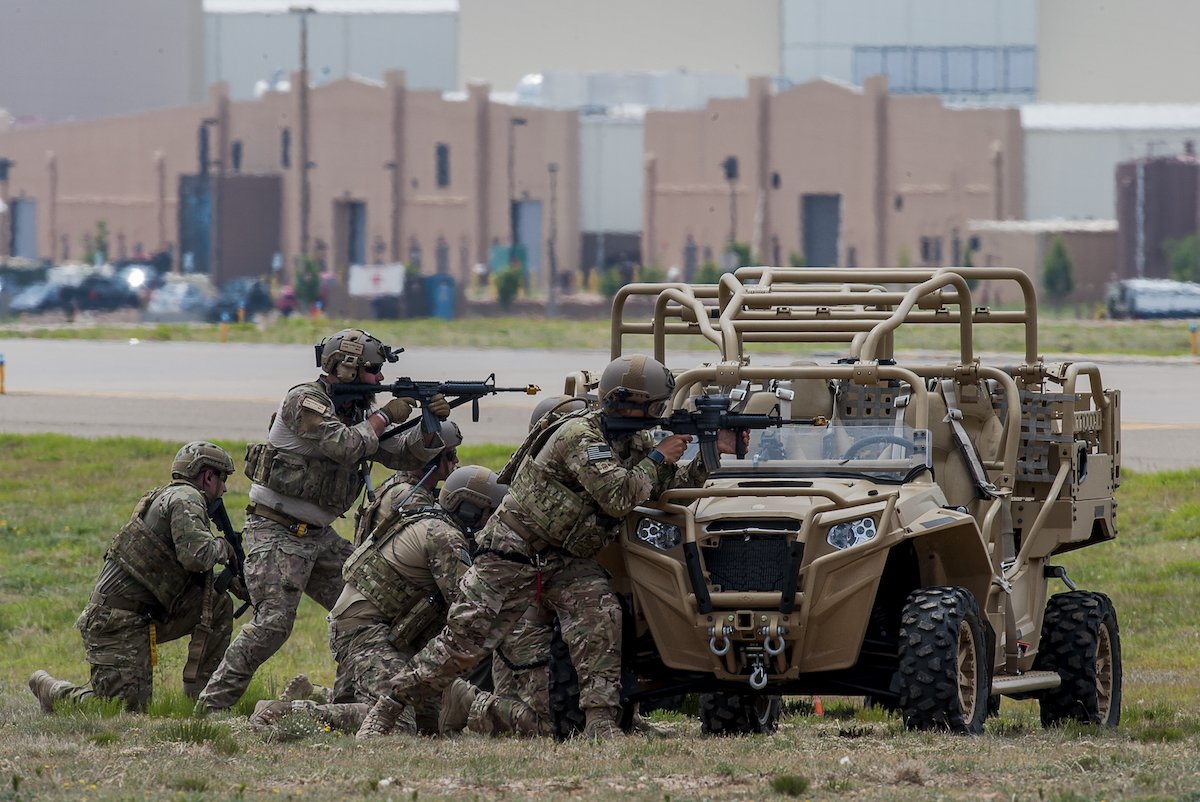
Cannon Air Force Base in New Mexico is home to the 27th Special Operations Wing, which includes AC-130 gunships, MQ-9 Reapers, special tactics teams, and other units that see extensive direct combat. US Air Force photo by Master Sgt. Dennis J. Henry Jr.
Cannon Air Force Base is the exact kind of place where you’d imagine the Air Force would collect and keep its most low-profile units. Just outside the high-plains farm town of Clovis, New Mexico, the base sits more than an hour from the nearest interstate and two more from any major city. In other words, it’s a perfect spot to keep the hard-milled machines and secrets of the 27th Special Operations Wing tucked away from the public eye.
The base’s flying units all belong to Air Force Special Operations Command, or AFSOC, and include two MQ-9 Reaper squadrons, two gunship squadrons (including Andrews’ 16th SOS), units of CV-22 Ospreys and U-28A Dracos, and the 26th Special Tactics Squadron, which is home to combat controllers and pararescue operators. Base officials like to describe Cannon’s units with well-worn phrases like “tip of the spear,” but there is truth to it: Along with AFSOC’s Hurlburt Field in Florida, it’s unlikely that any other base in the Air Force can boast as many veterans of direct, kinetic combat — either flying or on the ground — as at Cannon.
In short, many airmen at Cannon have killed people or seen them die.
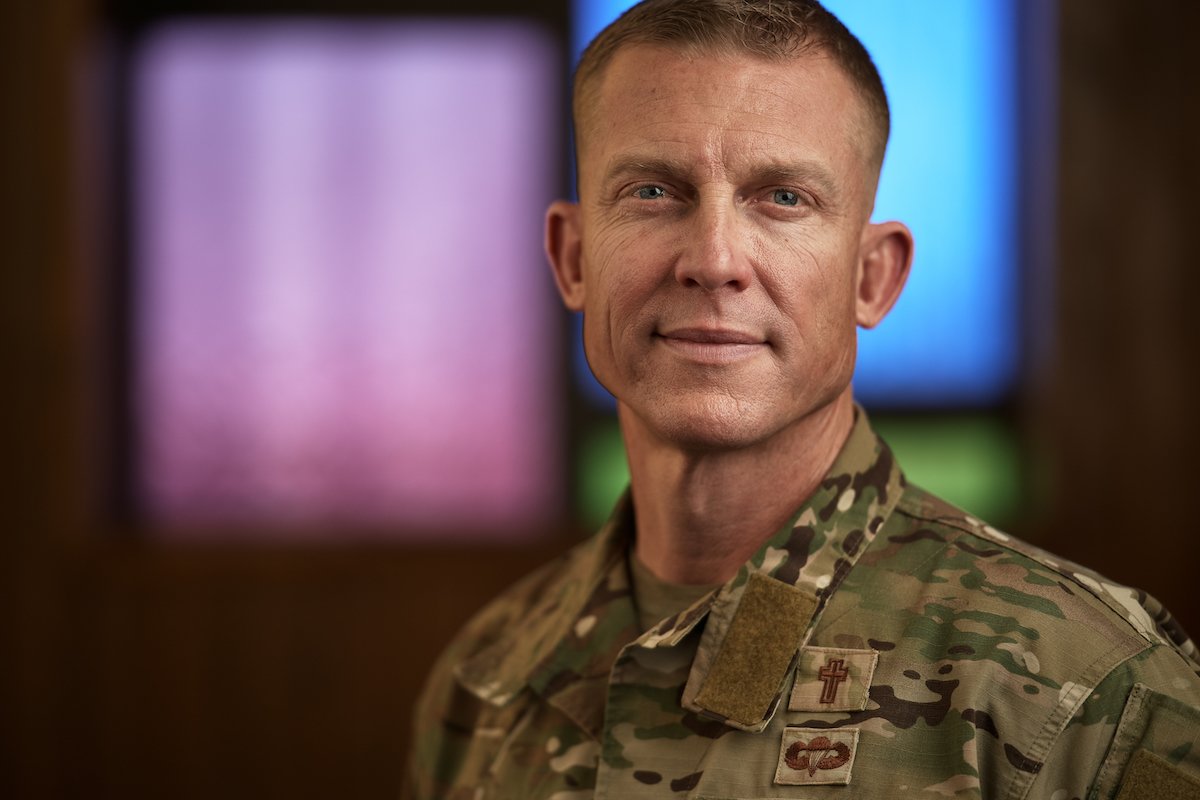
Photo by Nick Roush
But as a center of the service’s lethal force, it has also become a test bed of sorts for a new mental health initiative aimed directly at moral injury. Capt. Richard Campbell, the 27th Wing’s chaplain, who goes by Brenner, launched the program late last year after realizing he was seeing a specific kind of mental injury among Cannon airmen that did not fit the traditional diagnosis of PTS.
It hit home for him, he said, on a deployment when a combat controller confided during a late-night talk: “I’ve murdered so many people.”
The word the man used — “murdered” — struck Campbell.
“I mean, he’s been in the job for over a decade, and it’s eating him up,” Campbell said. The two talked through the night about the morality of war, why the US was in Afghanistan, and why the man had volunteered for a job so close to combat.
“I said, ‘Let’s talk about the difference between murder and killing,’” Campbell said. “I said, ‘I would never use that word about what you do. You don’t get to even decide who we take out, right? That decision comes from [generals with] multiple stars, that has been vetted through legal, that has been a case made over usually periods of long amounts of time.’”
Campbell realized that despite the violence of the man’s job, the man had never before grappled with his moral bearings.
“I mean, you just could see the spiritual weight lifted off this guy,” Campbell said. “For the first time in a decade, this guy didn’t think of himself as a murderer. He thinks, ‘I’m a moral actor,’ executing his nation’s mission.”
The moment motivated Campbell to launch a basewide moral injury program aimed at those in Cannon’s high-risk jobs.

“Having that E-7, E-8, that O-4, that O-5 who’s been battle tested, who’s done things, talk about what is really weighing heavy on their hearts,” Campbell said. “You’re willing to jump out of planes, get the rifle up, you’re willing to take out targets. I actually need you to talk about your feelings, where you felt like you questioned yourself and if your actions were good, if it was right.” Photo by Nick Roush for Coffee or Die Magazine.
“When you’re fighting for your life, you’re not thinking about the consequences,” Campbell said. “‘I’m gonna win. I’m gonna get home. I’m gonna see my family.’ But then the battle ceases and there’s no more rounds being fired, you know, all that washes away.”
Special tactics teams call in airstrikes on targets they sometimes can’t see or rush to battlefields to rescue people — often civilians — who can’t be saved.
Pilots of remotely piloted aircraft, or RPAs, spend days or even weeks learning a target’s “pattern of life,” then watch that person die on screen.
Gunship crews, for all their firepower, can’t save everybody.
The results, Campbell said, are experiences that “contradict something that they were taught was good early on in their life. Something has transpired. They witnessed it. They caused it, or they didn’t act. And some horrific thing occurred that goes against everything that they were taught as a child.”
“I actually need you to talk about your feelings, where you felt like you questioned yourself and if your actions were good, if it was right.”
At Cannon, Campbell addresses groups within squadrons, presenting the concepts behind moral injury, its causes, differences from PTS, and the treatments available on base. While a typical civilian moral injury training might last eight sessions, he said he’s lucky if he can meet Cannon’s often-deployed airmen for three. He also holds sessions for base leadership, spouses, and squadron commander groups, whose buy-in, he said, is vital to the program.
The sessions also address the morality of combat, how — as with the combat controller — to find a difference between combat deaths and murders.
But mostly, he asks the operators — usually the senior ones — to tell their stories.
“Having that E-7, E-8, that O-4, that O-5 who’s been battle tested, who’s done things, talk about what is really weighing heavy on their hearts,” Campbell said. “You’re willing to jump out of planes, get the rifle up, you’re willing to take out targets. I actually need you to talk about your feelings, where you felt like you questioned yourself and if your actions were good, if it was right.”
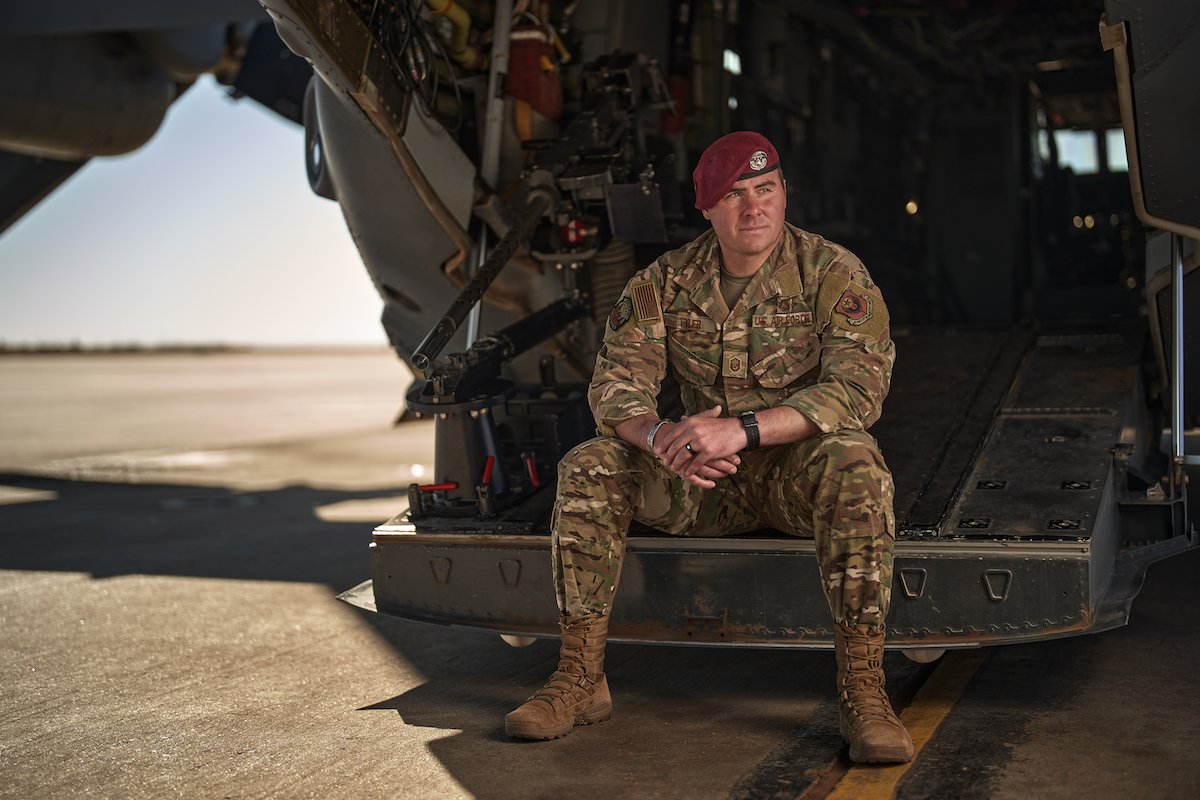
Photo by Nick Roush
Master Sgt. Justin Tyler has been a PJ for close to 10 years, including time as an instructor at the Air Force Pararescue school at Kirtland Air Force Base in Albuquerque, New Mexico. Now at Cannon’s 26th Special Tactics Squadron, he tries to put the operators under him through moral injury training every quarter.
“This is kind of a newer thing that we’re actually making it a point to pull guys aside and have these difficult conversations,” Tyler said. “I make fun of the young guys, you know, saying it’s the kinder, gentler Air Force, but I mean that in a way that we’re able to communicate that this is some training that you’re going to need because you’re going to see stuff like this. In the past, it was like, ‘Oh yeah, you’re going to see stuff like this, you’re probably going to have issues, but we just won’t ever talk about it.’”
Still, Tyler said, getting buy-in from younger operators is, predictably, not always easy.
“They’re 6 foot tall and bulletproof — until they’re not, you know, and broaching that subject can be difficult,” Tyler said. “It’s a lot of ‘Oh, that’s not gonna be me. I’ll be fine.’ A lot of it is just framing it correctly. Like, you’re saying you’re going to be fine, but let’s just have the conversation so at least we have that baseline knowledge. I know what you know, you know what I know.”
The story Tyler shares with younger PJs is from a 2019 deployment when his pararescue team was tasked to support a special operations team on a raid.
“The team was getting ready to hit the building, everybody’s outside of it, the building blew up,” he said. “Kinda crappy.”
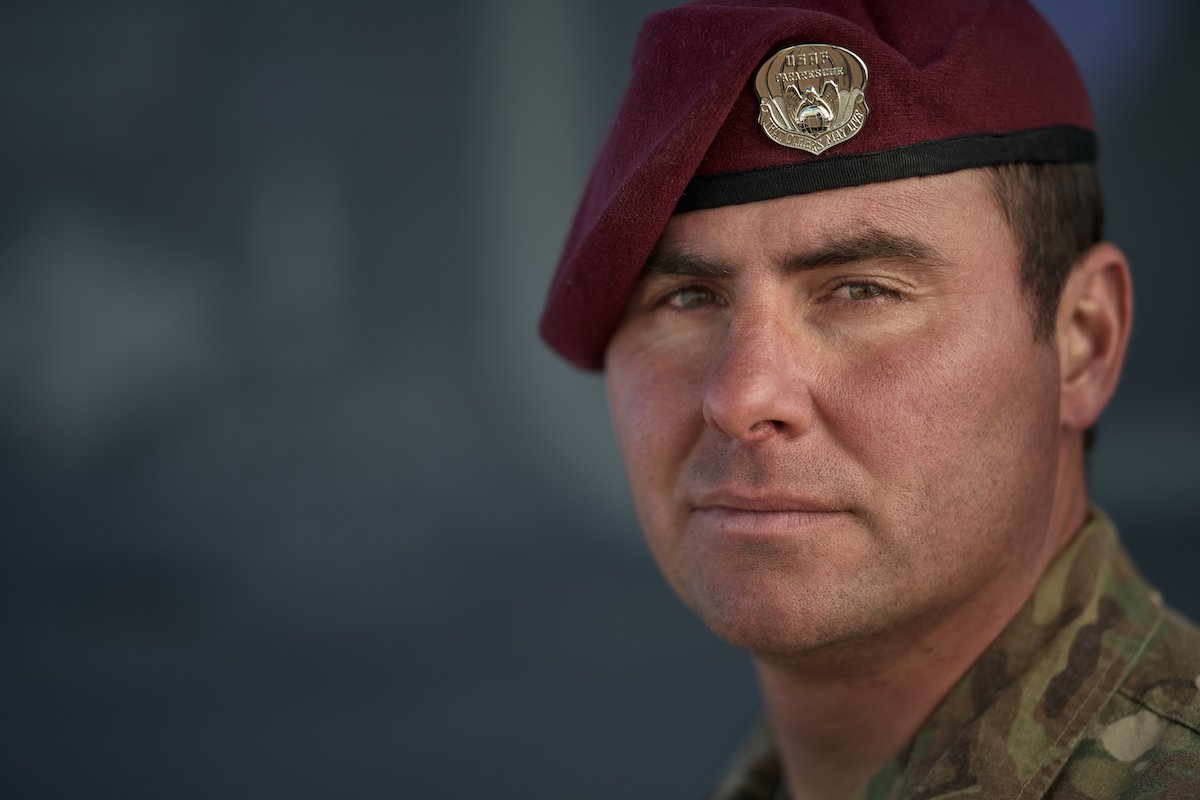
“They’re 6 foot tall and bulletproof — until they’re not, you know, and broaching that subject can be difficult,” Tyler said. “It’s a lot of ‘Oh, that’s not gonna be me. I’ll be fine.’ A lot of it is just framing it correctly. Like, you’re saying you’re going to be fine, but let’s just have the conversation so at least we have that baseline knowledge. I know what you know, you know what I know.” Photo by Nick Roush for Coffee or Die Magazine.
When Tyler’s rescue team arrived minutes later, spread across three helicopters, a fierce firefight was underway, with planes dropping bombs just 400 meters from the team as he set up a central collection point for casualties. In the chaos, Tyler said, at least two members of the stricken hit team bypassed his checkpoint and, unknown to him, threw their wounded comrades into a waiting helicopter. Unaccounted for by Tyler’s rescue team, the wounded men went untreated for close to 10 minutes and died, the only two deaths among nine wounded in the incident.
“It was tough just learning to be at peace with that,”he said. “Nobody can say that, hey, that’s the reason why the guys died. The reason they died is because the building blew up, right? So, yeah, it’s kind of about learning how to be at peace with that.”

Photo by Nick Roush
Lt. Col. Allison Hardwick commands the 3rd SOS, whose pilots remotely fly the MQ-9 Reaper. Even by AFSOC standards, she said, it’s kind of a weird job.
“It’s surreal,” she said. “I literally remember times I would be finishing up a shift and we were supporting, like, a direct-action raid, which is [a normal mission] — talking to a JTAC and being in a stack.”
A “stack” is the pattern that planes fly waiting for a ground team to call them in for strikes. In these fights, operators like Hardwick are communicating directly with troops in combat, relaying information on enemy forces that they can see, and even pulling the trigger to fire missiles at enemy fighters. The RPA operators will watch the impact, looking for survivors.
“And then my replacement comes in, sits down, we do the changeover briefing, and I go and pick up my 9-month-old daughter from day care,” Hardwick said. “And you feel your adrenaline still rushing, and I’m trying to drive home and it’s Clovis, so at most it’s only 10 minutes from work to home.”
Being at “work” as an RPA operator and then going home, Hardwick said, forces operators to cross and recross emotional and mental chasms that simply don’t exist for other special operators. The stress of those leaps can be a perfect recipe for moral injury.
“How do I process this? How do we manage that? There is no [opportunity for a] psychological disconnect,” Hardwick said. “That is the difference and the uniqueness of this specific community.”
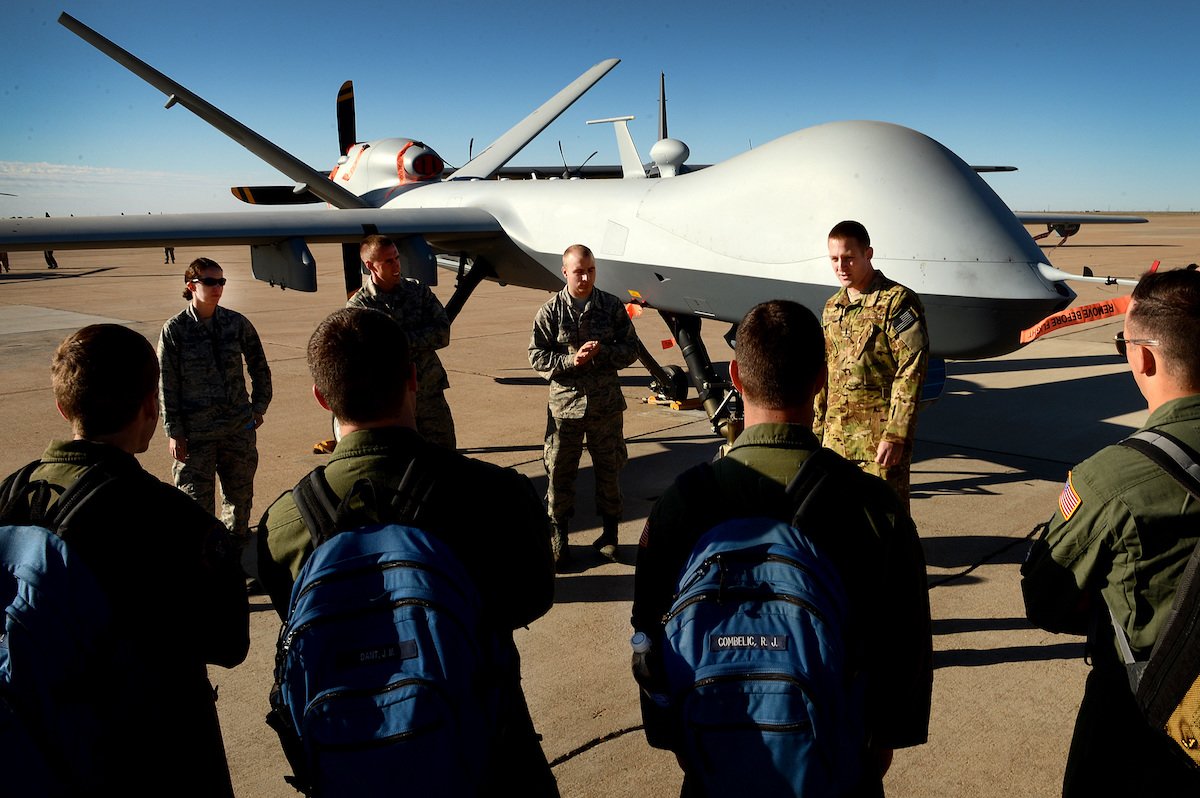
Cannon's 3rd Special Operations Squadron flies the MQ-9 Reaper. Air Force photo/ Staff Sgt. Matthew Plew
In the last two decades, RPAs have become constants on modern battlefields, providing reconnaissance, targeting, and firepower for ground troops. With no onboard pilot, they can stay on target for many hours, and their stealth and precision are beloved by ground troops.
But RPAs have also been blamed for hundreds of civilian deaths over the past two decades, perhaps most infamously the Aug. 29, 2021, strike in Kabul that killed 10 civilians.
“There is no acceptance for the death of civilians,” Hardwick said. “That is not acceptable.”
Hardwick would not discuss real-world missions or whether her squadron was involved in the Kabul strike but said it’s events like those that can shatter an RPA operator.
“Twenty years ago,” she said, “I would have been more, you know, ‘Hey, everyone goes through this, shut up.’ Because that was the culture, and I get it. That’s how I was raised, by the way.
“But I don’t want people suffering the rest of their lives because we didn’t actually do something about it.”
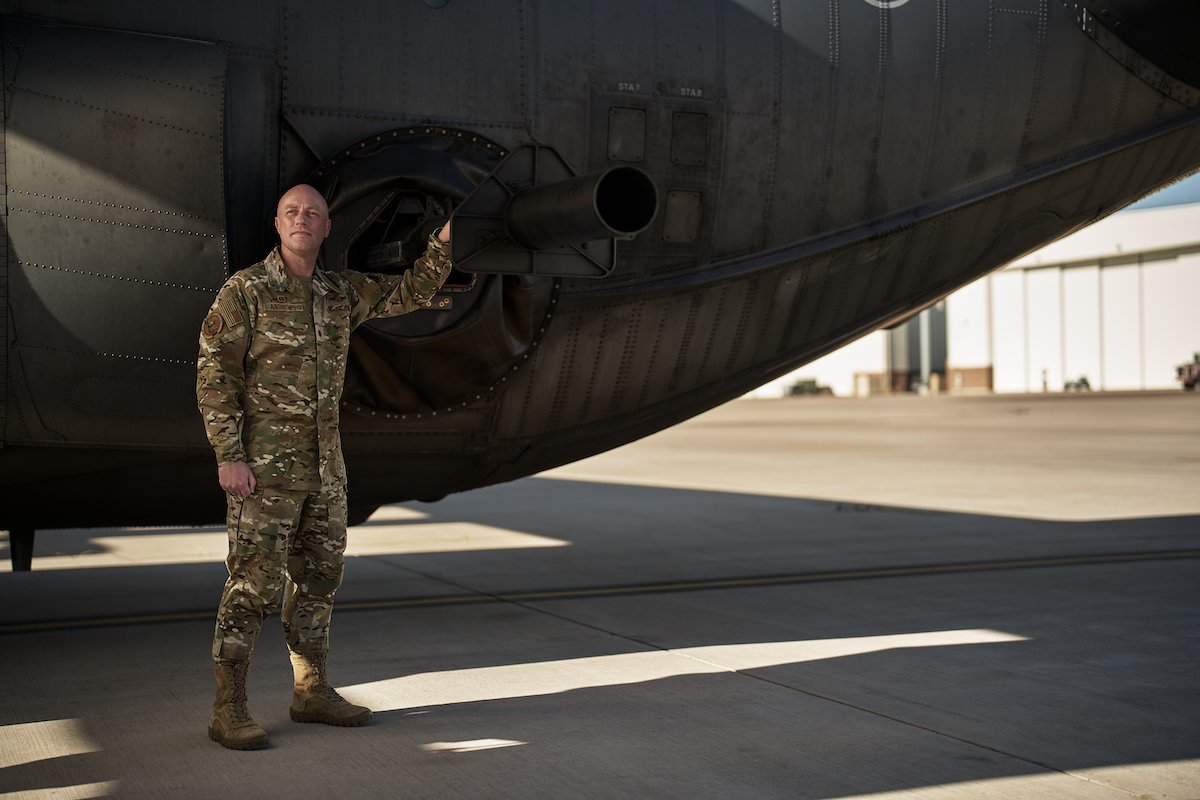
Photo by Nick Roush
Her squadron, she said, recently found that moral injury can extend beyond operators and even outside the fence around Cannon.
“One of our brand-new instructors is going through a lot of life challenges right now,” she said. “His family doesn’t support his career choice. His mother basically disowned him. He got a phone call [in which she said] ‘I can’t believe what you do, how could you live with yourself?’”
Over time, the pilot began to question the missions he was flying and sank into depression, Hardwick said.
“He didn’t tell anybody because it’s one of those — they don’t want to be a burden,” she said. “And it’s like, no, I want to take your burden off of you, we’re here to help you.”
Finally, as the squadron focused more on mental health, the man came forward and sought mental care, and with approved medication and therapy, he eventually returned to flying.
“We have had several victories of individuals that have come back and they’re flying, and they’re doing great,” Hardwick said. “And I just want to hug them. Like, they’re like my little brothers and sisters. They come back and they want to be there and they want to do the mission.”
But as conflict around the world continues to flex and change, the focus on moral injury will need to change with it.
“It’s not just RPA but any of these career fields where you’re seeing carnage or you’re seeing people die,” she said. “We just did not prepare ourselves to manage this."
This article first appeared in the Spring 2022 print edition of Coffee or Die Magazine.
Read Next: Short on Recruits, Army Eases Tattoo Rules — Too Late for One Woman

Matt White is a former senior editor for Coffee or Die Magazine. He was a pararescueman in the Air Force and the Alaska Air National Guard for eight years and has more than a decade of experience in daily and magazine journalism.
BRCC and Bad Moon Print Press team up for an exclusive, limited-edition T-shirt design!
BRCC partners with Team Room Design for an exclusive T-shirt release!
Thirty Seconds Out has partnered with BRCC for an exclusive shirt design invoking the God of Winter.
Lucas O'Hara of Grizzly Forge has teamed up with BRCC for a badass, exclusive Shirt Club T-shirt design featuring his most popular knife and tiomahawk.
Coffee or Die sits down with one of the graphic designers behind Black Rifle Coffee's signature look and vibe.
Biden will award the Medal of Honor to a Vietnam War Army helicopter pilot who risked his life to save a reconnaissance team from almost certain death.
Ever wonder how much Jack Mandaville would f*ck sh*t up if he went back in time? The American Revolution didn't even see him coming.
A nearly 200-year-old West Point time capsule that at first appeared to yield little more than dust contains hidden treasure, the US Military Academy said.












